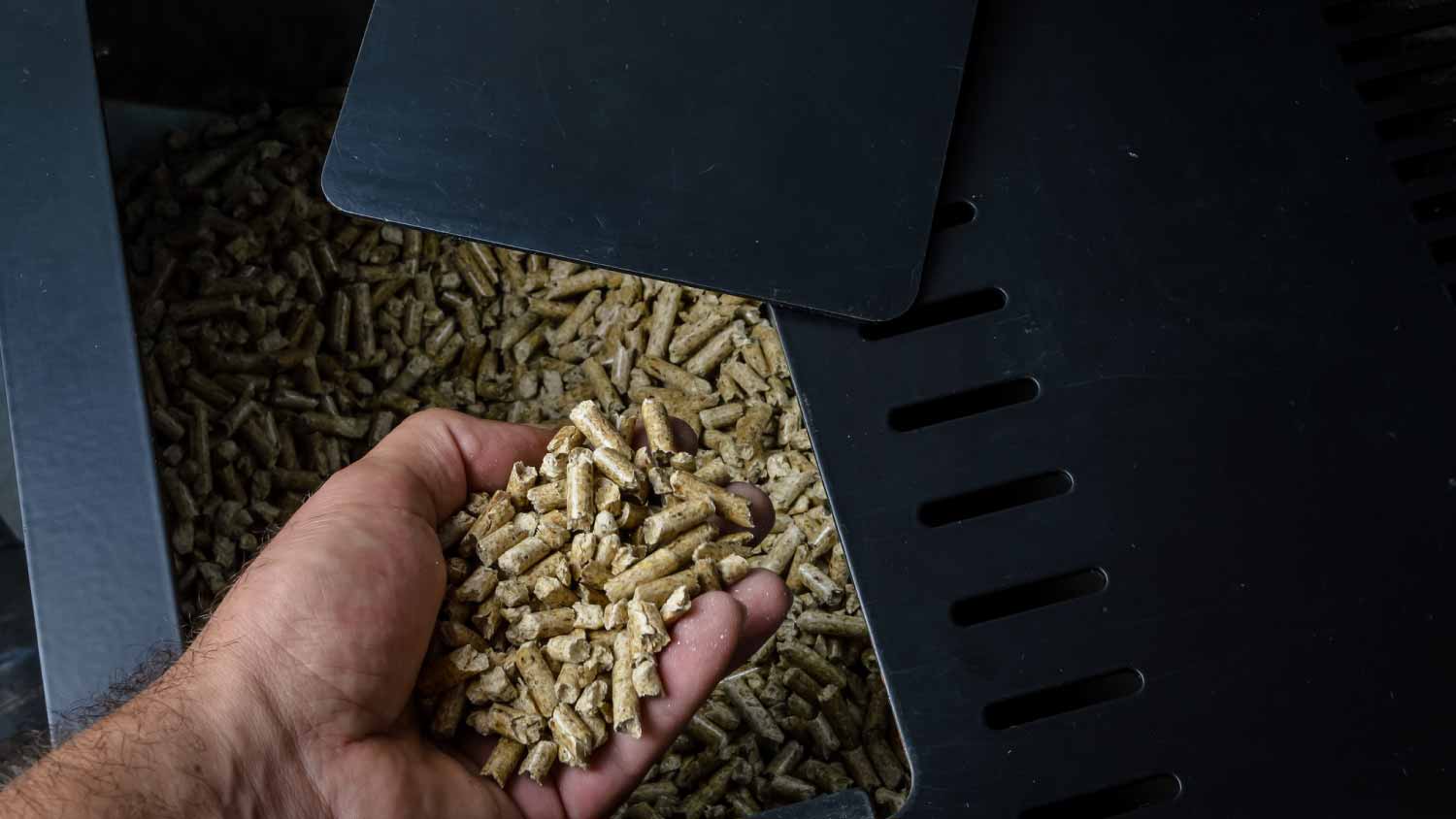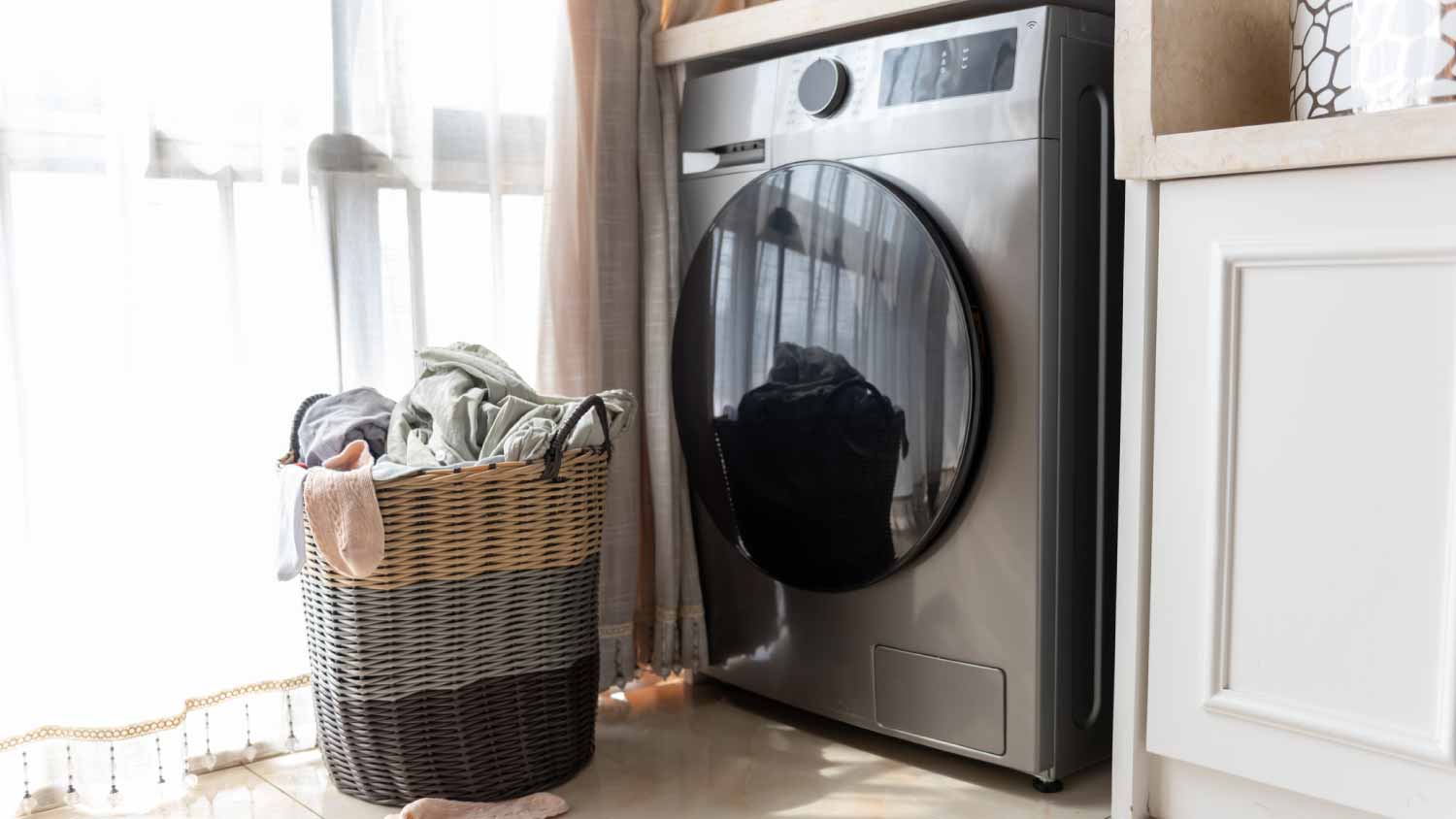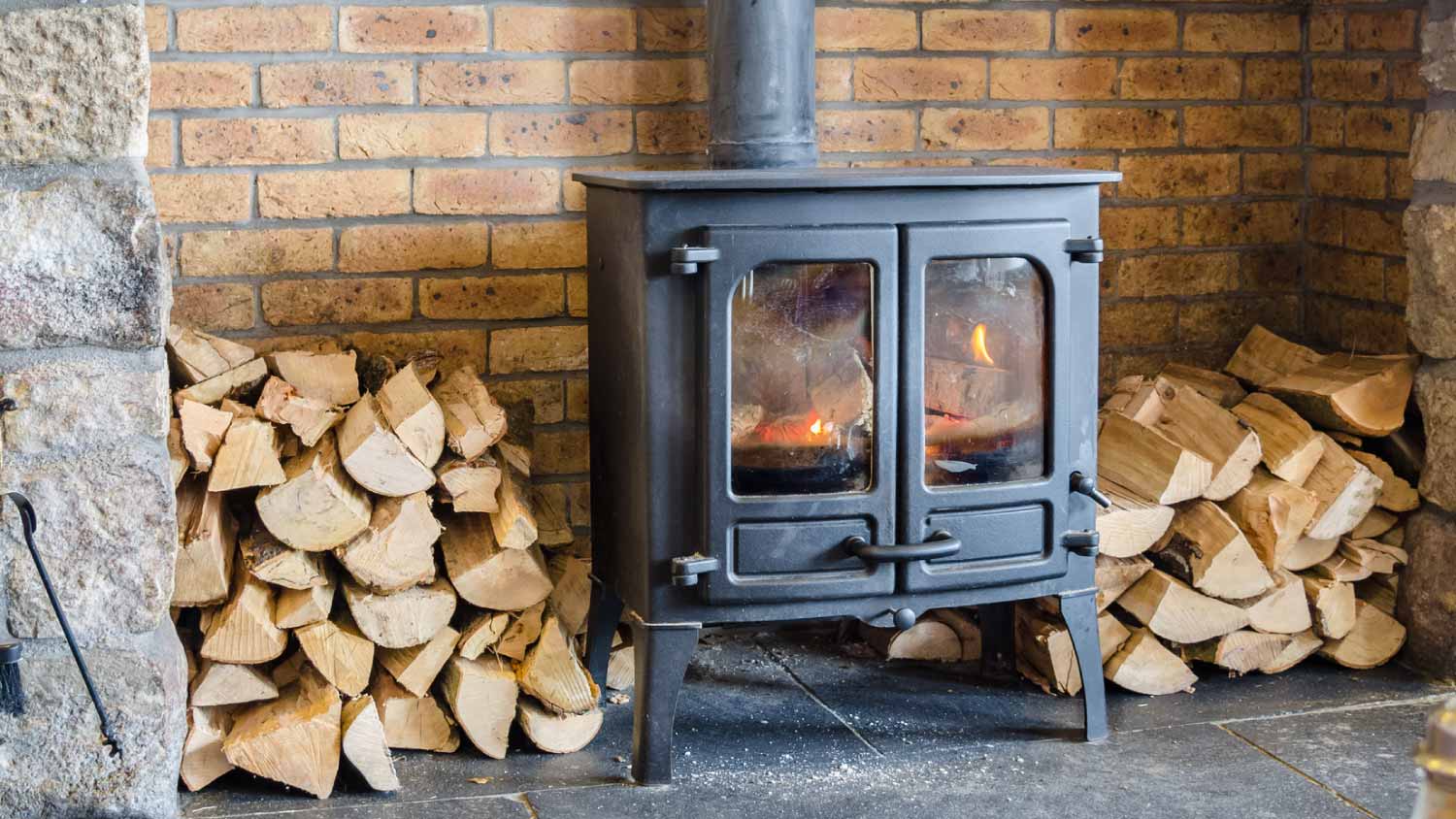What Is a Pellet Stove? Your Ultimate Guide to Efficient Home Heating
Big energy savings come in small forms


Pellet stoves burn small, compressed pellets made of various materials.
They require electricity and venting for proper operation.
Pellet stoves are more expensive than wood-burning stoves.
This heating method is efficient, eco-friendly, and easy to use.
Professional installation is required for proper venting.
If you’re exploring alternate home heating methods, you’ve probably come across pellet stoves. But what is a pellet stove, and how does it work? These modern heating appliances are great for residential spaces, and they’ve gained popularity for their efficiency, eco-friendliness, and cost-effectiveness compared to traditional heating methods. If that all sounds amazing, keep reading to learn more.
What Is a Pellet Stove?
A pellet stove is a type of stove that burns small, compressed pellets made from biomass materials like sawdust, wood chips, agricultural waste, or even paper. These pellets are automatically fed into the combustion chamber so that the stove can operate through a controlled burn. You can regulate a pellet stove with a thermostat or a control board, which ensures consistent and efficient heat output for your home.
How Do Pellet Stoves Work?
Pellet stoves operate using a few key components. Some of the most vital parts of a pellet stove and their jobs include the following:
A hopper to store pellets
An auger system to feed pellets into the burn pot
A combustion fan to supply air for combustion
A heat exchanger or flue to transfer heat into the living space
The pellets ignite via an electric igniter, and the combustion process is controlled electronically for optimal efficiency. Then, the ash from the burnt pellets collects in the handy ash pan for easy removal. Proper ventilation for a pellet stove is important so that the smoke (though minimal) escapes safely.
Pellet Stove vs. Wood-Burning Stove: What's the Difference?

Unlike traditional wood-burning stoves, which require you to manually add wood, pellet stoves offer automated fuel delivery and combustion control. This makes them easier to use and more efficient. Pellet stoves also produce fewer emissions than wood stoves and require less manual labor for operation and maintenance.
Pellet Stove Pros
Pellet stoves offer several advantages over both traditional home heating systems and wood-burning stoves. The biggest benefit is that they are highly efficient, with some models boasting efficiency ratings of over 90%. This means more heat produced for less fuel consumed, translating to lower heating costs.
Here are some of the top benefits of pellet stoves:
Efficient heating: Pellet stoves can heat large areas effectively due to their high heat output and efficient combustion process.
Eco-friendly: They burn cleanly and produce low emissions, contributing to better air quality compared to wood stoves.
Reduced heating costs: When you compare traditional heating systems like propane to pellet stoves, operating costs for pellet stoves are lower. This is especially true if you use pellets sourced locally or from sustainable materials.
Easy operation: Compared to wood-burning stoves, pellet stoves are easier and cleaner to operate. They require less frequent refueling and produce minimal ash.
Pellet Stove Cons
Despite their benefits, pellet stoves do have some drawbacks to consider.
If you're regularly using your pellet stove, you should empty the ash pan, clean out the burn pot, and wipe down the window every week. You should also clean the vent pipes at least once per year, depending on how often you burn.
High-maintenance: Regular cleaning of ash and maintenance of mechanical parts like the auger and fans are necessary to keep the stove running efficiently.
They take up space: Pellet stoves require space for the unit itself, as well as clearances around it for safety and ventilation.
Electricity required: Pellet stoves rely on electricity to power the auger, fans, and sometimes the ignition system, which means they won't operate during power outages unless they’re connected to a backup power source.
Higher cost than wood-burning stoves: Initial purchase and installation costs for pellet stoves tend to be higher than those of wood-burning stoves.
Types of Pellet Stove Fuel
Fuel is an important factor to think about when you’re considering installing a pellet stove. These stoves can burn various types of pellets, each with its own benefits and characteristics.
Wood Pellets
Wood pellets are made from compressed sawdust and wood shavings. They are widely available and offer consistent heat output, making them a top choice for pellet stove owners.
Corn Pellets
These pellets are made from dried corn kernels and can be a budget-friendly alternative to wood pellets, though they may require adjustments to the stove's settings.
Miscellaneous Biomass Pellets
Pellets made from agricultural by-products like cherry pits or olive pits offer unique heating options. However, they may be less readily available, making them a higher-cost option.
Will a Pellet Stove Heat an Entire House?
The heating capacity of a pellet stove varies based on its size and efficiency rating. Larger models can heat entire homes, especially when strategically placed in central locations or where airflow is optimized. However, for larger homes or in very cold climates, supplementary heating may be necessary.
Can You Install a Pellet Stove Yourself?
While installation is possible for exceptionally advanced DIYers, it’s best left to professional installers or those with carpentry skills and knowledge of venting requirements. Local stove companies can ensure proper venting, compliance with building codes, and safe operation of your new pellet stove.
How Much Does a Pellet Stove Cost?
The cost of a pellet stove varies widely based on the stove’s size, features, and brand. On average, prices range from $1,000 to $3,600 for the stove itself, with installation costs adding several hundred to over a thousand dollars, depending on complexity. In comparison, a wood-burning stove costs between $325 and $4,000.
Frequently Asked Questions
Pellet stoves are designed to operate quietly, often emitting only a soft hum from the combustion fan and auger. Compared to traditional wood-burning stoves or furnaces, modern pellet stoves are relatively quiet during operation. This minimal noise ensures they can efficiently heat living spaces without causing disruption, making them a preferred choice for those seeking both comfort and peace of mind.
No. Pellet stoves are specifically designed to burn manufactured wood or biomass pellets. Attempting to burn other materials, such as regular firewood or paper products, can damage the stove, compromise its efficiency, and even pose safety hazards due to inconsistent combustion and increased emissions. It's crucial to follow manufacturer guidelines and only use pellets that are specifically recommended for your pellet stove model to ensure safe and optimal performance over its life span.
The burn time of pellets in a pellet stove depends on factors such as stove size, heat setting, and pellet quality. A full hopper of pellets can last anywhere from 12 to 48 hours. Lower heat settings will extend burn times, while higher settings will reduce them. It's important to choose high-quality pellets because they burn more efficiently and produce less ash, maximizing the stove's burn time and overall performance. Regularly monitoring the pellet level ensures consistent heat output and optimal efficiency from your pellet stove.





- Appliance Repair Companies
- Washing Machine Repair
- Dryer Repair
- Refrigerator Repair
- Dishwasher Repair
- Oven Repair
- Wood & Pellet Stove Repair
- Freezer Repair Services
- Wood Stove Services
- Gas Stove Repair
- Emergency Appliance Repair Companies
- Ice Maker Repair
- Gas Appliance Repair
- GE Appliance Repair
- GE Refrigerator Repair
- GE Dryer Repair
- GE Dishwasher Repair
- GE Washing Machine Repair
- Samsung Appliance Repair
- Samsung Refrigerator Repair
- Samsung Dryer Repair
- Samsung Washer Repair
- Samsung Dishwasher Repair
- Samsung Oven Repair
- Whirlpool Repair
- Whirlpool Refrigerator Repair
- Whirlpool Washer Repair
- Whirlpool Dryer Repair
- Whirlpool Oven Repair
- Maytag Appliance Repair
- Maytag Refrigerator Repair
- Maytag Washer Repair
- Maytag Dryer Repair
- Maytag Dishwasher Repair
- Kitchenaid Appliance Repair
- Kitchenaid Oven Repair
- Kitchenaid Refrigerator Repair
- Kenmore Appliance Repair
- Kenmore Dishwasher Repair
- Kenmore Washer Repair
- Kenmore Dryer Repair
- LG Refrigerator Repair
- Bosch Appliance Repair
- Kenmore Refrigerator Repair
- LG Appliance Repair Services
- GE Microwave Repair
- Electrolux Appliance Repair
- Electrolux Washer Repair
- Kitchenaid Dishwasher Repair Services
- Wood Stove Inspection
- Dishwasher Installation
- Trash Compactor Repair
- Pellet Stove vs. Wood Stove: What’s the Difference?
- Pellet Stove Installation: Who to Hire to Heat Up Your Home
- Are Pellet Stoves Safe? Yes, If You Follow These Steps
- Troubleshooting 10 Common Pellet Stove Problems
- Do Pellet Stoves Need a Chimney?
- 9 Reasons Your Pellet Stove Is Not Igniting
- Everything You Need to Know About the Different Parts of a Pellet Stove
- How to Install a Pellet Stove: Freestanding, Wall-Mounted, and Insert
- 6 Pellet Stove Maintenance Tips That Will Save You Money on Repairs
- Pellet Stove vs. Propane Fireplace: What’s the Better Heating Option for Your Home?











